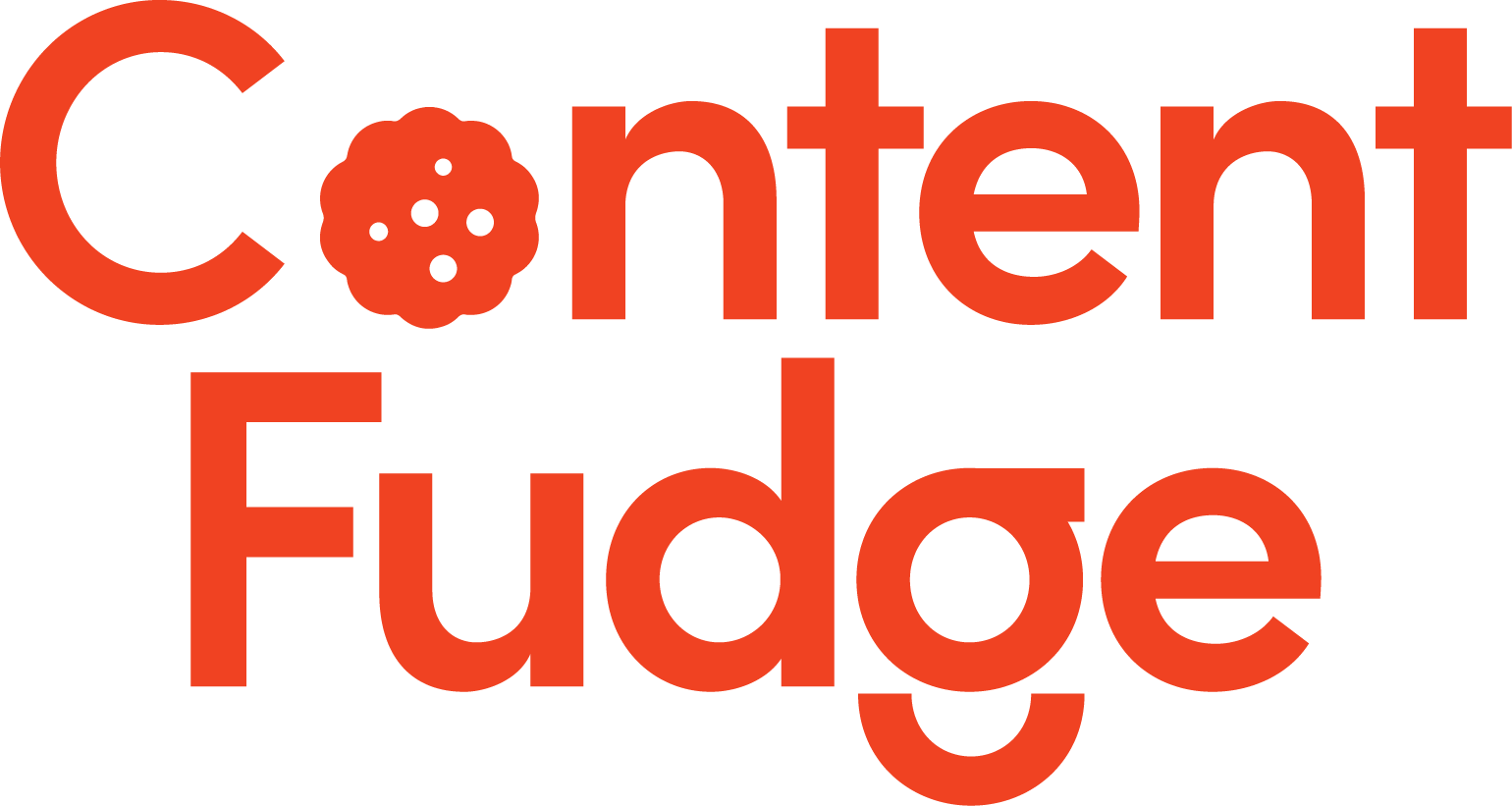How to create an Instagram content strategy for your new business in 2024 (based on our experience)
Don’t know what to post next? Then you are probably missing a content strategy. Learn how to create one for your small business for one of the most powerful platforms – Instagram.

Table of contents
When you google an instagram content strategy you will very likely find blog articles with several very basic steps:
- Define your target audience
- Research your competitors
- Craft engaging content
- Analyse and optimise
But the reality is that there is much more to it than just these four steps. These steps are only the tip of the iceberg, which goes way way deeper.
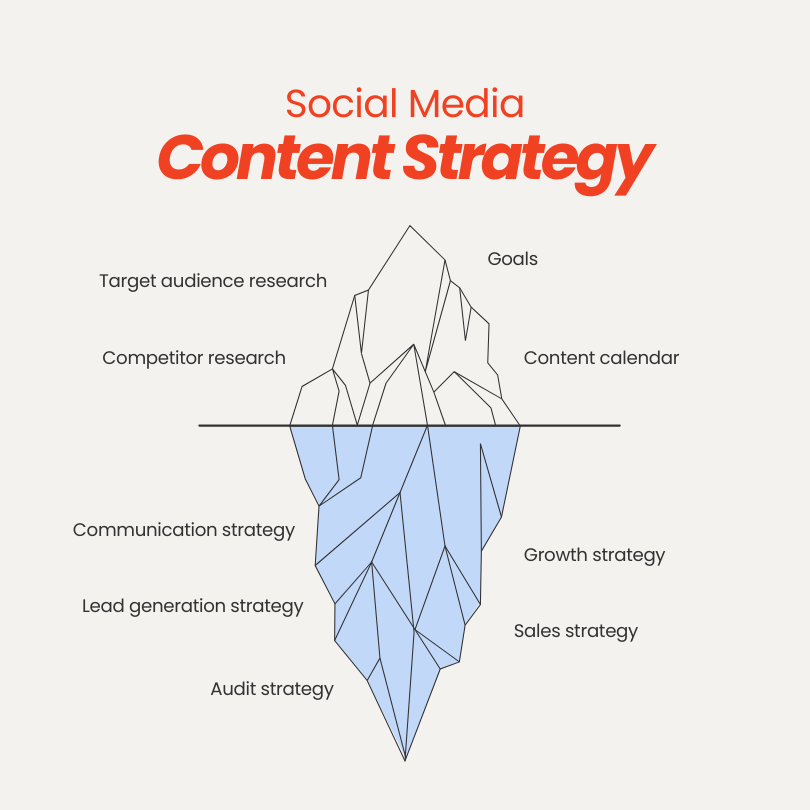
A comprehensive Instagram content strategy should include:
- Content Strategy
- Communication Strategy
- Growth Strategy
- Sales Strategy
- Audit Strategy
- Content Creation Process
Why, you ask? Because it’s not only about the content you post (a.k.a. what you say to your audience).
It’s about your brand’s image (how it looks), your brand’s communication (how you say it), your business goals (why you do it), and content implementation (how you do it consistently).
In this article, we’re going to unpack the first two—content strategy and communication strategy. I’ll delve into the other points in my future blog posts.
Be sure to subscribe to my newsletter (no spam, just juicy content tips and a sprinkle of cheeky humor 😉) to catch them and learn how to grow your instagram following fast.
Subscribe to my Sunday Fudge Newsletter 🍪
It is going to be a long blog article.
Everything you need to know is right here.
So grab a cup of coffee, find a comfy spot, and dive in. And don’t forget to bookmark this article for easy access whenever you need a refresher!
Before starting with your content strategy
Groundwork
Before diving into your Instagram content strategy, it’s crucial to lay a solid foundation. Once you start posting and attracting an audience, generating leads will naturally follow—but those leads need a seamless way to convert.
And your groundwork should take care of that.
So, what does effective groundwork look like?
Firstly, ensure you have a professional and on-brand website or landing page.
This site should clearly describe your offer or product, guide potential customers towards a purchase decision, and feature an easy, automated purchase or booking system.
Additionally, it’s wise to set up an email funnel that nurtures leads and persuades them to take desired actions.
Why is having your own website and an email list so critical? Well, the digital world is unpredictable.
Instagram can shut down at any moment. Just think about the current uncertainties surrounding TikTok in the U.S.
Tomorrow you might wake up, your account was banned. Or, what’s worth – your whole following is gone.
But your email list, stored safely in a good old Excel sheet or managed through a sophisticated email marketing platform, remains under your control, no matter what happens on social platforms.
Thus, the initial step before even thinking about crafting your Instagram strategy and becoming visible to your target audience is to ensure your groundwork is thoroughly prepared.
This foundational work protects your efforts and ensures you can keep connecting with your audience, come what may.
Not sure if about your groundwork? Download our checklist for new businesses with everything you need to tick off before launching.
Content strategy
Step 1 – Social plan con Objetivos
Your marketing activities should all revolve around one central element—your business goal. And your Instagram content is no exception.
If we break down the hierarchy of objectives within your marketing efforts, it would look something like this:
- Business Objective – Your overarching goal as a company.
- Marketing Objective – How your marketing strategies align with your business goal.
- Content Marketing Objective – The specific targets set for your content.
- Instagram Objective – The purpose behind each Instagram post.
Take, for example, Warby Parker. They often share content that isn’t directly about their glasses, like a meme about soup. This may seem off-topic, but it’s actually part of a broader marketing strategy to make the brand appear fun, approachable, and relatable.
So, to craft a proper content strategy for Instagram, start with these questions: Why do I want to post on this social media platform? What is my goal?
If your aim is to boost brand awareness, your social media plan should focus on maximizing exposure and reach.
Alternatively, if your goal is to generate more leads this year, your strategy should be designed to drive traffic into your sales funnel.
Essentially, there should be a clear reason behind every action you take. This strategic approach ensures that every piece of content contributes towards achieving your broader business objectives.

10 common social media marketing goals
- Increasing brand awareness by using social media platforms to enhance the visibility and recognition of a brand among a broader audience.
- Boosting engagement through interactions such as likes, comments, and shares to build a community and encourage active participation from followers.
- Driving website traffic by directing users from social media platforms to a company’s website to increase traffic and potentially boost sales or conversions.
- Generating leads by using targeted social media campaigns to collect information from prospects, helping businesses to expand their sales funnel.
- Enhancing customer service by utilizing social media as a tool for quick responses and direct communication, which can improve customer satisfaction and loyalty.
- Building a positive brand identity and managing reputation by sharing valuable content, engaging with users, and addressing any issues publicly and professionally.
- Increasing sales and conversions by leveraging social media advertising and promotional campaigns to encourage purchases directly from or influenced by social media platforms.
- Gaining valuable insights through social media analytics to understand audience preferences, behavior, and feedback, which can guide future marketing strategies and product development.
- Showcasing products or services to highlight new and existing items, demonstrating their features and benefits to attract customers.
- Establishing thought leadership by sharing expert content that positions the company or individuals within it as authoritative and knowledgeable in their field.
When setting a goal for your social media content strategy, ensure it’s a SMART-goal (Specific, Measurable, Achievable, Relevant, Time-bound).
This approach helps you track your progress by monitoring metrics like follower growth, engagement rates, website traffic, and conversions. This data allows you to see if your strategies are working and make necessary adjustments.
As your company evolves, so should your goals. If your business plan is clearly defined, your content strategy should align with what’s next for your company, adapting as you grow and develop.
Resources:
- Greg Sides, Hootsuite, https://blog.hootsuite.com/smart-social-media-goals/
- Stacey McLachlan, Hootsuite, https://blog.hootsuite.com/instagram-marketing/
- Warby Parker Instagram soup post, https://www.instagram.com/p/Cz7QF5qOOQE/?img_index=1
Step 2 – Research
Every strategy starts with research. And a whole ton of it.
What your research needs to include is:
- Who your target audience is,
- Who your competitors/similar accounts on instagram are,
- What your competitors/similar accounts post and
- What your target audience likes.
Target audience
The best way to understand who your target audience is is to look at your current followers.
Examine their demographic information, preferences, and actions to gain insights into their identity and the kinds of content they interact with the most.
This data is available in the Professional Dashboard section of Instagram.
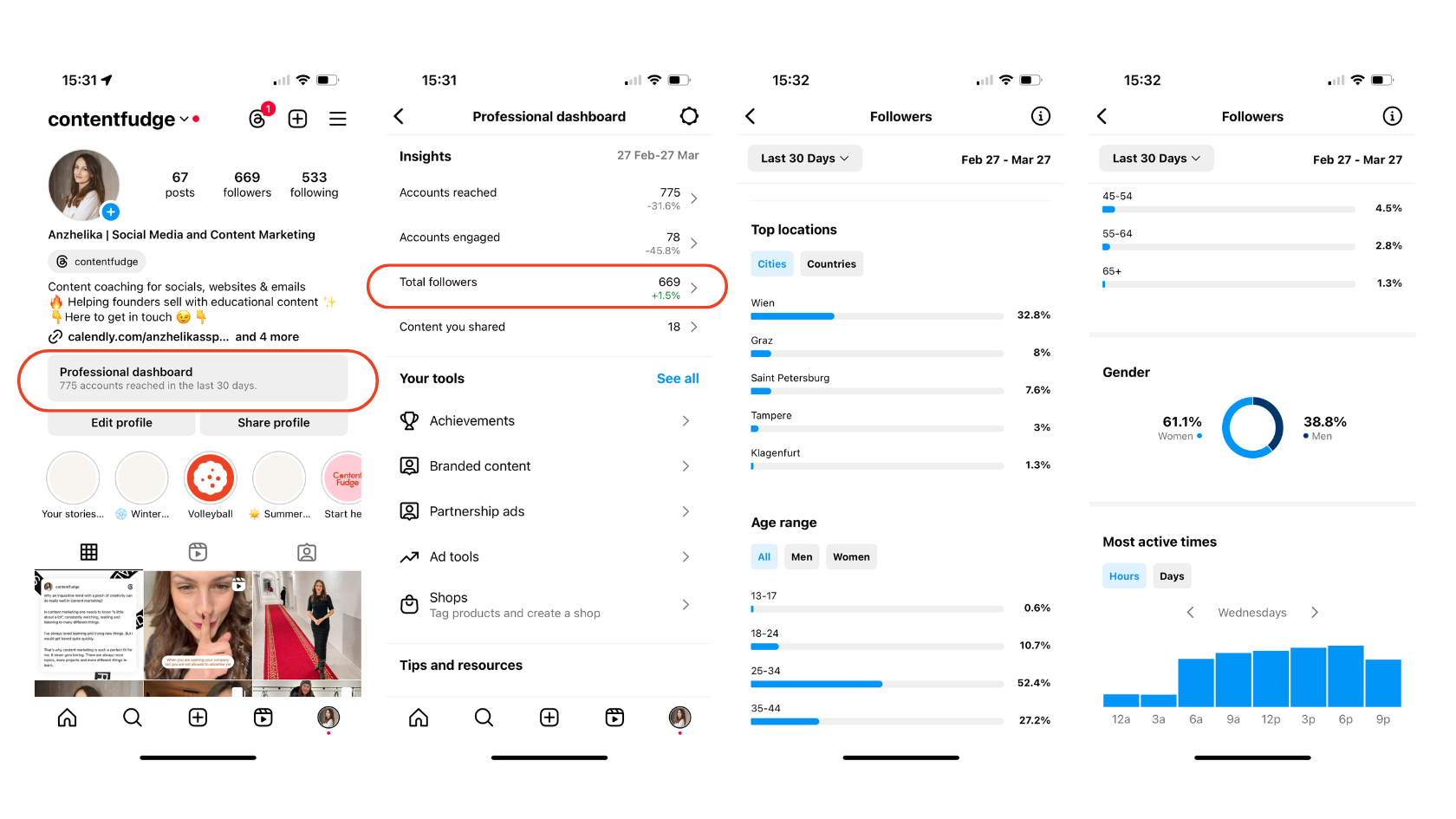
If you’re starting your Instagram account from scratch and your initial followers are mostly friends and family, their demographics might not reflect your ideal customer base.
In this case, you’ll need to look beyond your current followers to research your potential customers.
One effective method is to explore Instagram accounts that are similar to yours or belong to your competitors.
Pay attention to their followers’ comments to understand their needs, questions, and pain points. This can provide insights into how you might address these needs and stand out in the market.
However, Instagram may not be the most efficient platform for detailed audience research due to its limitations, such as not allowing users to post open questions easily and requiring a thorough read-through of all comments.
For a more in-depth understanding of your target audience, consider joining Reddit or Discord communities related to your topic.
These platforms are valuable for direct engagement with potential customers. You can observe what they discuss, ask about, and complain about, which provides a rich source of information.
Reddit and Discord are particularly useful because people often view user-generated content as more trustworthy.
For instance, as of 2020, according to this report, Reddit had 52 million daily active users, marking a 44% increase from the previous year. The platform’s growing popularity makes it a prime source for honest product and service reviews.
Buyer persona
Once you’ve compiled the information on your target audience demographics, behaviours and pain points, it’s crucial to create detailed buyer personas.
A buyer persona is a detailed, semi-fictional representation of your ideal customer based on market research and real data about your existing customers.
Essentially, a buyer persona helps you visualize your customers as real people with specific needs and preferences, enabling you to create more relevant and effective marketing messages.
For example, if you know your buyer persona values sustainability and ethical production, you might highlight these aspects in your campaigns to resonate more deeply with them.
Buyer personas are essential for your content strategy as it ensures you know precisely who you’re targeting with your content and campaigns.
My personal advice – give that buyer persona a name and a face—think of ‘Jen’. And before posting your content, ask yourself,
“Would Jen like this?”
If the answer is yes, go ahead and post.
If it’s no or you’re unsure, consider rethinking your approach to better align with your target audience’s preferences.

Competitors
Researching your competitors is absolutely crucial, and I can’t stress this enough.
But it does not mean copying what they post or say. It’s about learning from them—analyzing what they do well, understanding what resonates with their (and potentially your) target audience, observing their growth strategies, and noting how often they post and so on.
Have you heard of a process called reverse engineering? This involves taking a successful account and dissecting its success to understand the strategies behind it.
From there, you identify opportunities where you can do better and, most crucially, pinpoint what makes you unique.
Understanding how you stand out from your competitors can help clarify why their followers might also benefit from following you.
This unique differentiating factor should then drive your content strategy.
Here are some practical tips to how to reverse engineer an account:
First of all, make sure you save the list of accounts you want to learn from. You can either create a collection with posts from those accounts.

Or you can tag them as favourite followers, their posts will appear first in your feed and you will be able to find them in the favourites tab.
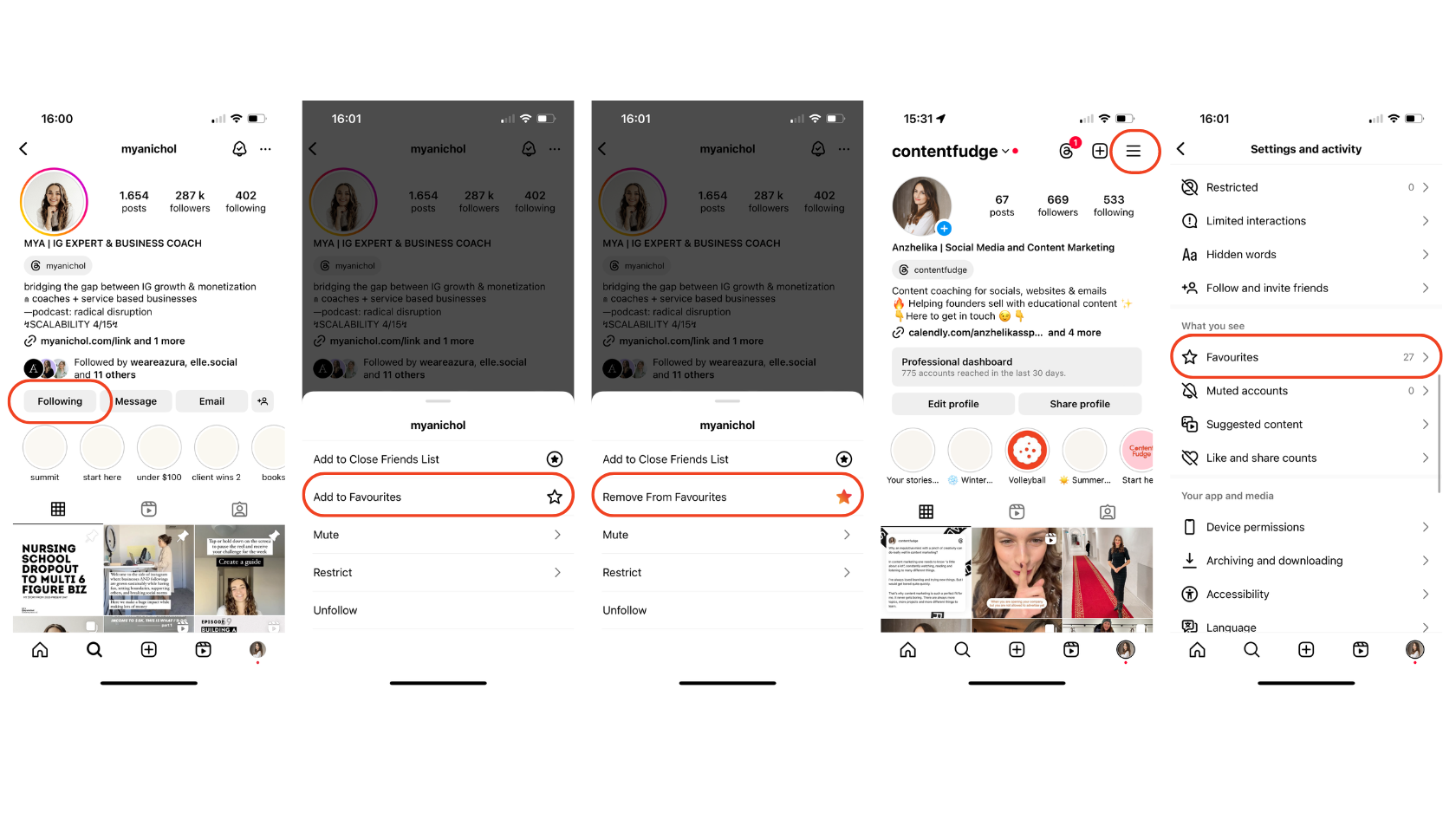
Once you created the collection, start learning by answering these questions:
- What does their Bio say
- What links they have in their Bio and where do they lead
- How does their feed look like, do they have a branding
- Do aethentics matter for your target audience
- What topics do they talk about, especially what topics are frequently repeated
- What topics bring the most engagement
- What content types (IG images, IG carousels, IG reels, stories) do they use
- What content types bring the most reach
- What content types bring the most engagement
- What kind of engagement
- How often do they post
- Was there a period when they posted more often
- Was there a period when they posted something different, was it successful?
- Are they growing
- Do they have a lead generation strategy and what is it
- How do their leads convert
- Do they have a website
- Do they have a newsletter
- What are their other customer touchpoints?
Do this for each account and you will have a pretty good idea of how that account became successful.
Keep in mind that doing a thorough research of your competitors will also help you understand your target audience.
You will learn what types of content your audience engages with the most. You will determine what they prefer to see in their Instagram feed. And you will identify topics that are likely to attract their interest.
How to spy on your competitors with Business Suite
If you haven’t been using business suite until now, start doing it.
We will come to it when we talk about content scheduling. But it also has a magnificent feature that allows you to spy on your competitors.
Go to Business Suite, click Insights on the left hand menu, click Benchmarking and switch to Businesses to watch.
Here you will see how many followers your businesses of interest gain per month and how much content they publish. It will give you a rough idea of your account’s performance and how it compares to others.

Step 3 – Content
Topics
But hey, just mirroring your competitors’ content won’t do you any favors in gaining followers. In fact, it might just paint you as a copycat—or even worse, as insincere.
That is why you need to select 3-5 content pillars that are unique to your brand. Content pillars are broad topics that you tie to your brand and your audience.
Here are four factors that should drive the selection of your content pillars:
- Your expertise (your main jam)
- Your differentiating factor from competitors (your unique spin)
- Trending topics among your competitors (this tells you what’s working for them (take it, but spin it your way)
- Trending topics among your audience on other channels like Reddit (this gives you fresh ideas for posts)
Your expertise will dictate your main theme.
Your differentiation factor will drive the subtopics (aka content pillars).
The trending topics among competitors will tell you what works well for them and what you should include to stay relevant.
Trending topics among your audience on other channels will give you separate post ideas.
Sources
It’s not only important to decide what topics you want to cover. It’s also important to find the reliable sources for your information.
ChatGPT is not one of them. But thought leaders in your industry are.
Find the biggest guys in your industry who regularly post content and use them as information source for your posts.
Those guys have a team of content strategiests and creators working on their content. That’s why they can always stay up to date, post high quality research-based content on a consistent basis.
It’s not a one man job.
And as a future thought leader you want to only post reliable and trustworthy information.
That is why, find 4-5 biggest guys in your industry. Subscribe to their newsletter. And dedicate one afternoon a week reading up on their content.
Content Types
the Now that you determined what topics you are going to talk about, the next step is to choose the appropriate content types and content formats.
Content types refer to how you want to make people feel with your content. There are four typical content types:
- educational
- emotional
- entertaining
- promotional
According to a 2023 Statista study, 50% of weekly Instagram users prefer to see funny content on the platform. 46% enjoy “creative” posts, while 41% like informative content.
Other popular types of content, which appeal to about 36% of users, include posts and Stories that are relaxing, inspiring, engaging, or trendy.
Interestingly, the celebrity posts that continue to drive engagement are very personal—like pregnancy announcements, dramatic makeovers, wedding photos, or humorous posts with friends.
They are not promoting their products or advertising movies. They are being (seemingly) authentic, and fans really connect with that.
That is why, no matter what your main topics are, it is important to decide who you want to deliver it to and how you want to make people feel with it.
This decision is all about matching your content with your brand’s vibe and archetype. If your brand is all about that strict professional life, silly memes are a no-go. But if you’re a laid-back graffiti artist, you won’t be caught using stuffy, pretentious language to chat with your fans.
But no matter what your brand is, you should always keep in mind the purpose of each social media platform and adjust your content type accordingly.
Tiktok and Instagram are highly entertaining and personal platforms, while LinkedIn is a professional one. That is why you can discuss the same topic in a different way that fits the platform in mind.
On instagram, in particular, you should get personal. Be silly. Express your values. Showcase your personality and the real you.
Content Formats
Social media content formats refer to whether your post will be a video, image, collection of images (carousel), story or just text.
Choosing an appropriate content format will depend on your current business goal, as different content formats get different reach and engagement.
Instagram reels still have the highest reach rate in comparison to the other two formats. That is why, if your business goal is to generate awareness around your brand and grow your instagram account, reels is the preferred format for you.

Image source: https://sproutsocial.com/insights/instagram-stats/
If your company business goal is to retain existing customers and maintain engagement, static images or carousels might be a good option.
Admittedly though, video is king, as the average engagement is higher for reels than the other two content formats.
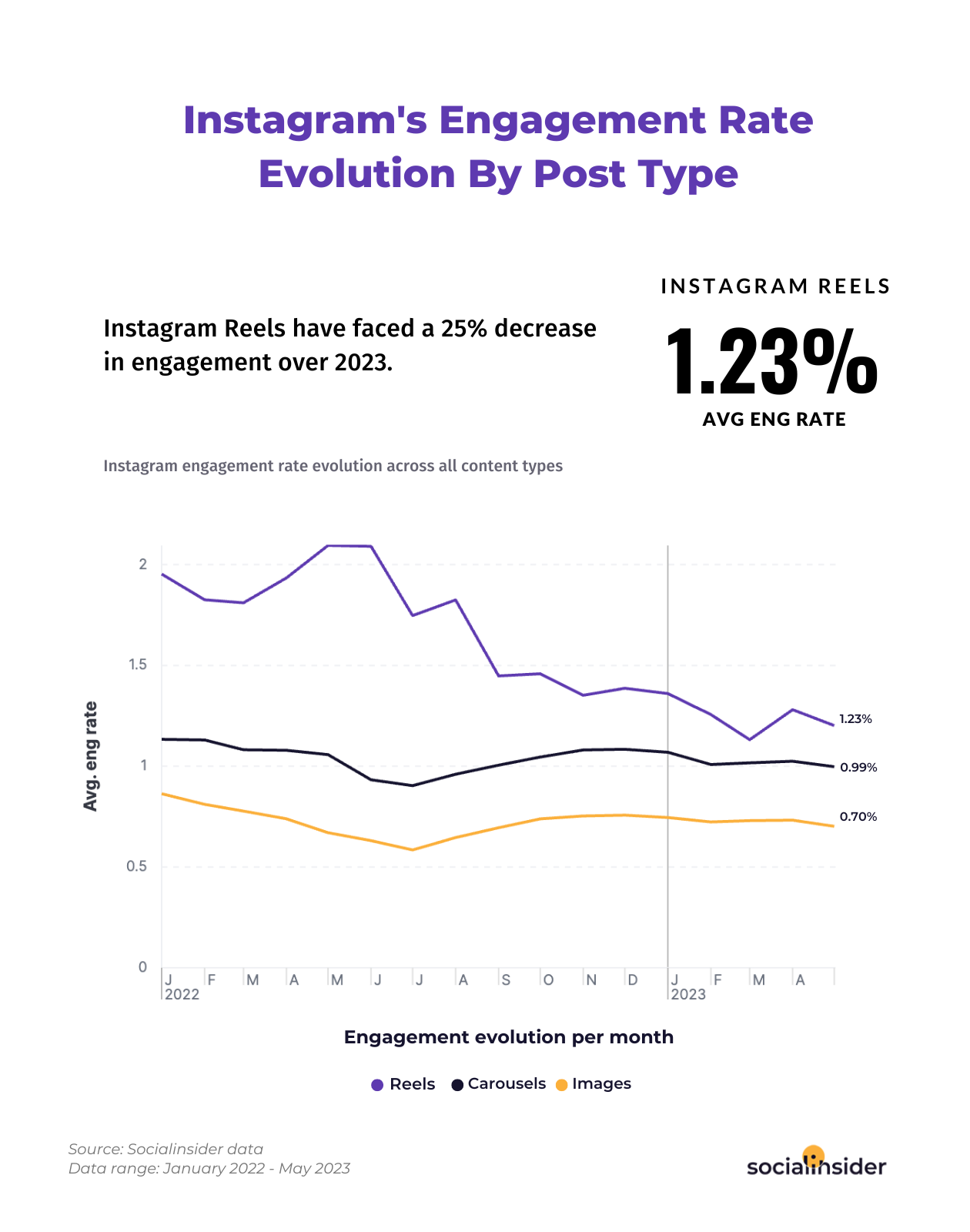
Image source: https://sproutsocial.com/insights/instagram-stats/
When deciding on content format, think of a traditional customer journey and what you want to achieve with your content.
Do you want reach? Use reels.
Do you want to drive considereation and interest? Use IG images and carousels.
Do you want to boost sales? Use stories and last slides in a carousels.
Here’s the visualisation of content format for each customer journey phase:
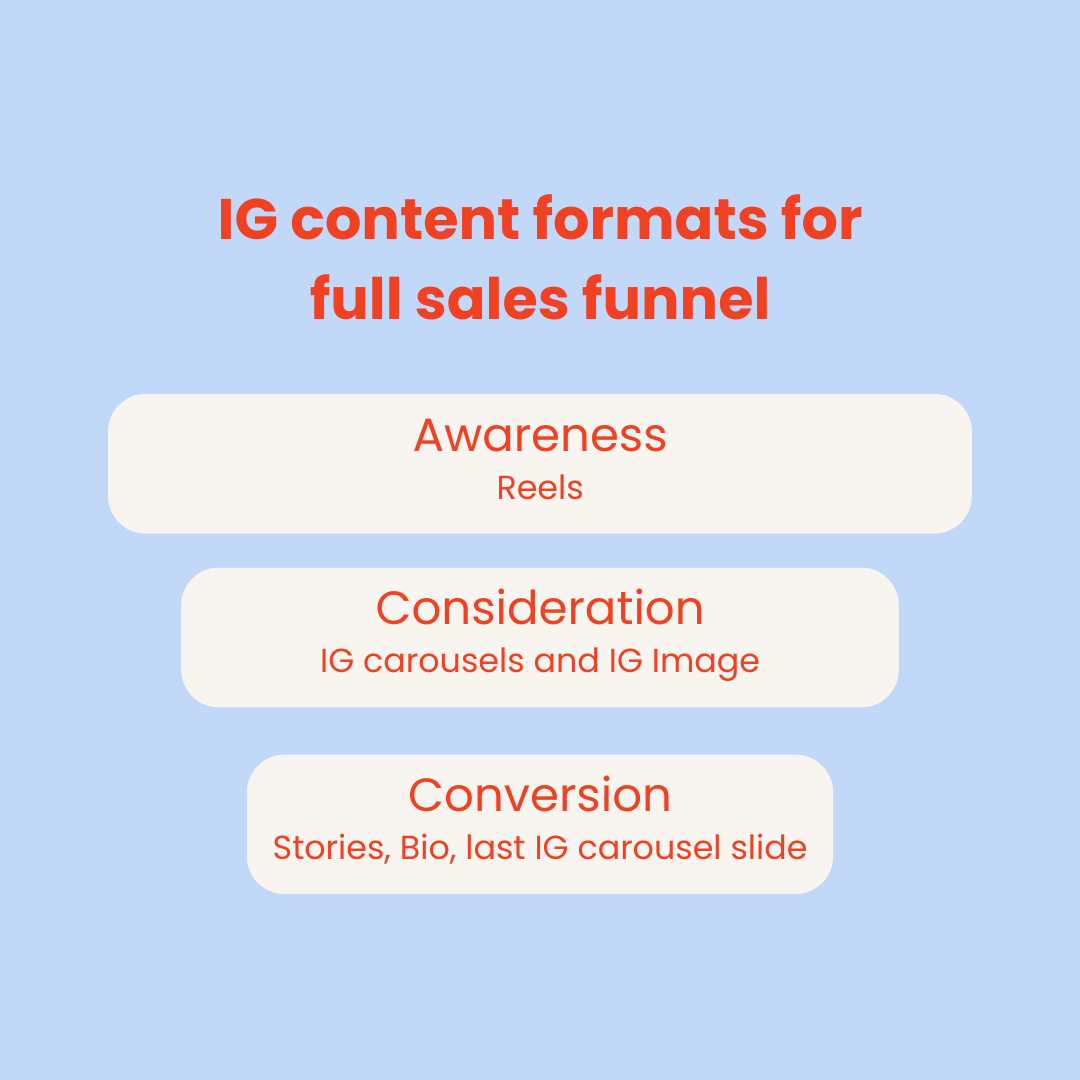
References:
- Jacqueline Zote, Sproutsocial, https://sproutsocial.com/insights/instagram-stats/
Step 4 – Content planning
Content Calendar
A social media calendar is a detailed plan of your future social media posts, ordered by date and time. It can be a document, spreadsheet, or interactive dashboard. I use, for example, a social media content calendar in Notion.
Each entry in a social media calendar usually includes:
- The post creatives (copy, images, videos, links, tags, etc.)
- The date and time it will be posted
- The social network and account where it will be published
Your social media calendar will be unique to you. For instance, if you are a small business owner handling their own social posts, you will have a simpler calendar with fewer platforms than a large brand with a big social team.
To plan your social media content calendar outline the essential information and functions for your needs to maximize the benefits of your social calendar.
Start with basic details for each post:
- Title
- Post information (in video or image)
- Format
- Platform
- Date
- Caption
- Promotion
- Visuals (e.g., photo, video, illustration, infographic, gif, etc.)
- Link to assets
- Link to the published post, including any tracking info (like UTM parameters)
- Status
If you’re just starting out, a simple spreadsheet, like this, can be effective.
For a more robust solution, consider using a social media template in Notion. Notion offers an interactive calendar that:
- Helps you build complete posts
- Supports team collaboration on drafts
Personally, however, I do not schedule all of my content in advance. I do prepare enough proactive content every week to be able to post on each of my chosen platforms every day.
But I do leave room for reactive content or for when inspiration strikes.
Posting inspiration-driven content shows people that you put your soul in it helping build an even stronger connection.
And if something major happens in your industry, you want to be able to act on it fast, to show your audience that you are up to date and relevant.
That is why keeping some space for some reactive content should be part of your content strategy.
Reference:
- Christina Newberry, Brayden Cohen, Hootsuite https://blog.hootsuite.com/how-to-create-a-social-media-content-calendar/
Posting frequency
How often you are going to post will also depend on your business goal.
If your business goal is awareness and reach, you should be posting reels every day.
If your business goal is engagement, you can post 4-5 times a week. This will ensure you stay on top of the mind of your audience while engaging them with relevant content.
If your goal is to expand your leads and customer base through gaining followers, you should post every day.
Let’s think about virality.
Let’s say you have 1 in 100 chance to go viral. So one in every 100 posts will go viral (this is now a random statistic, but from my own experiene, it is not completely off).
If you post every day, you will need 100 days to go viral and to significantly increase your following.
If you post 4 times a week, you’ll need 175 days to go viral.
If you post once a week, you’ll need 700 days to go viral.
So if your goal is to grow, you need to give the algorithm a daily opportunity go help you grow.
Time to post
Research from Later suggests that posting on Instagram in the early morning hours can lead to better engagement. They recommend 4 a.m. as an optimal time, but posting early in general should bring benefits.
However, each audience is different. And it’s crucial to try posting at various times to see what works best for your specific audience.
As a rule of thumb, you should look when your followers are most active and post your content before they open the platform to make sure your content pops up on top of their feed.
Consider the time difference between you and your followers. What is an early morning for you, might not be a morning for them. So it is better to rely on the active hours on the platform.
You can find the time your audience is most active in your Professional dashboard > Followers > Most active times.
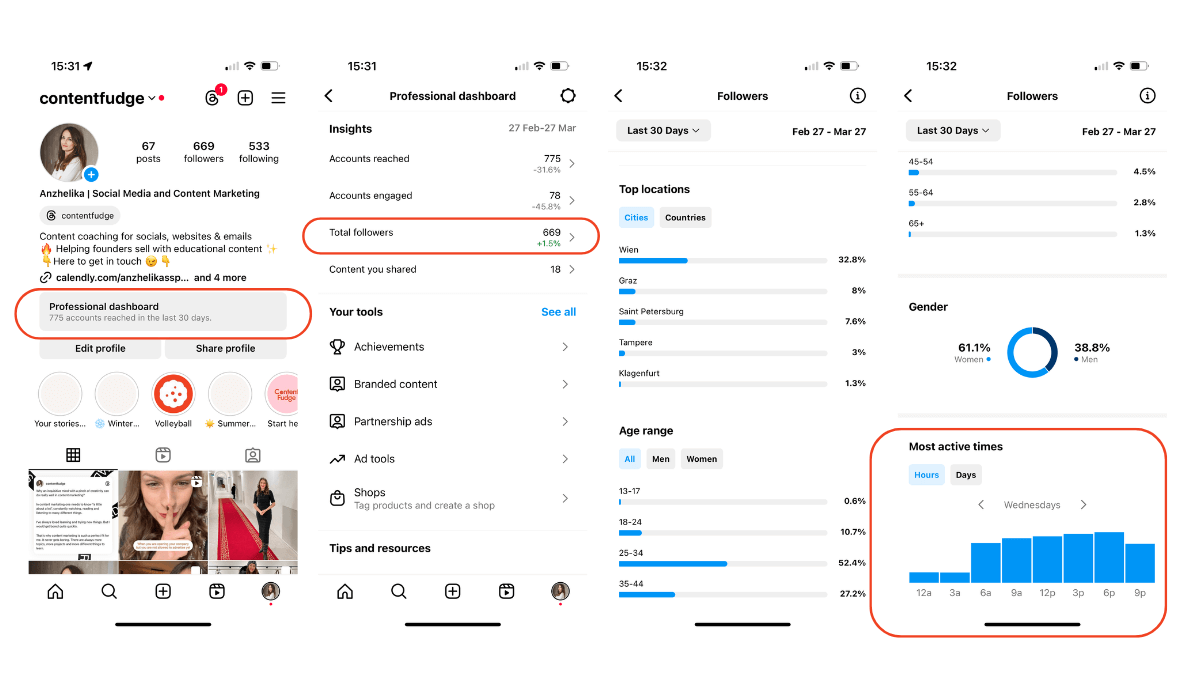
Communication strategy
Now that you know who you are posting for, how you stand out from competitors, what you are talking about and when, it’s time to discuss about how you are going to talk about your topics of choice.
This will be determined by your communication strategy.
A communication strategy determines how you write, how you engage with your audience and how you address your audience.
Here are a few things that your communication strategy should cover:
- Your tone of voice
- Your take on controversial topics
- Your responses to negativity or criticism
- How you address the audience
- How you engage with your audience
Your Tone of Voice
Think of your tone of voice as your brand’s personality. Are you the friendly neighbor, the wise mentor, or maybe the quirky innovator?
For instance, if you’re a tech startup, your tone might be fresh, enthusiastic, and a bit geeky in a cool way! Imagine explaining a new app feature; you’d say something like, “Guess what? Our new update is like a superhero for your productivity!”
Staying consistent with your tone of voice is like staying consitent with your visual identity. People recognise your writing style just as they recognise your colors and your logo.
So defining a clear tone of voice will help you connect with your target audience and stand out from your competitors.
How You Address the Audience
Your audience is your community. Address them in a way that makes them feel valued. Use “you” to speak directly to them, and “we” to create a sense of community.
For a fitness brand, this could look like, “You’ve got this! And we’re here to guide you every step of the way. Let’s crush those goals together!”
For a mental health brand, the way you address your audience could be more subtle and gentle.
Do you have a name for your community? Then use that name, when addressing your audience to create the feeling of unity.
Take Enso brand, who created a device to act as your personal pocket therapist. As this device allows people to lsiten to their hearts, the brand address their community as “heart-listening people”.
How You Engage with Your Audience
Engagement is all about interaction. Your communication strategy should indicate what methods you’ll use to engage with your audience.
Will you host Q&A sessions, run contests, or post interactive polls?
For instance, a coffee shop might post on social media, “What’s your dream coffee flavor? Drop your wildest ideas in the comments and we might just make it happen!”
If you want to actively engage with your community, outline the ways you can do it and include a few of them per week in your content calendar.
If your goal is to rather be a teller of stories and a silent observant, using active engagement strategies is not necessary.
Your Take on Controversial Topics
Deciding how to handle hot-button issues can really define your brand. Will you take a stand, or remain neutral?
Let’s say you run a sustainable clothing brand. If a controversy arises about fast fashion’s impact on the environment, you might post an informative, thought-provoking blog discussing the benefits of sustainable materials without directly attacking competitors.
As these topics often come up unexpectedly and your following might expect a quick response from your side, knowing in advance what your take on different controversional topics just might save your reputation.
Your Responses to Negativity or Criticism
Everyone faces criticism, but the key is in how you respond.
Always keep it professional and constructive. For example, if someone tweets, “Your product broke after one use!” a good response would be, “Oh no, that shouldn’t have happened! Let’s make it right. Could you DM us so we can sort this out ASAP?”
In fact, your communication strategy should be outlined as part of your brand development process. But let’s face, when we need to choose colors and logos, we forget about other things.
‘Cause we are so excited.

So make sure you define your tone of voice and your engagement strategy as part of your entire content strategy before you venture out there into the wild.

Conclusion
If you’ve read all the way to the bottom of this article, give yourself a big pat on the back—I’m seriously impressed because I typed every single word myself! 😅
Before you go, two key takeaways:
- Aim to Be a Thought Leader: Don’t just post for the sake of posting. Share your insights because you’re passionate about your knowledge, your topics, and because people are eager to learn from you.
- Keep It Simple: Understand your content and its purpose, but don’t get bogged down in the details. Start somewhere, experiment, evaluate, refine, and enhance. Remember, nobody’s perfect right off the bat, but starting and improving along the way is crucial.
Feeling a bit overwhelmed doing it solo? Consider joining my coaching and mentorship program, “Content Milkshake.” This three-month journey covers everything from building your business and crafting your content strategy to automating your digital marketing and creating systems that scale.
Curious? Book a free discovery call with me, and I’ll spill all the details!

Book a free discovery call
Book a free discovery call with me and I’ll tell you everything you want to know about my “Content Milkshake” program 😉
